The content of the article
The horned viper is ranked as a family of viper snakes, false-horned to the genus. This reptile has deserved such an unusual name thanks to a pair of its unusual protruding horns, which its nature has endowed.
External characteristics
This species of snake has an average body size. The body is thick, has a cylindrical structure and can reach up to 0.89 - 1.16 meters in length. At the end of the body, the snake has a short tail, the length of which is about 8 or 8.5 cm.
The reptile has a wide and flat head, on top of it its shape resembles a pear and is separated from the body by the neck. The eyes are of medium size, the pupils are vertical, transmitting an elliptical shape and resemble a cat's look. Snake nostrils bulging out and raised up. The reptile of this species is very rough on the nature of the surface of the skin.Convex horns in the form of pointed blades above the eyes are formed by several scales. The scales in the area of the horn are much smaller than the dorsal scales, it stretches along the surface of the snake body from the side, and resembles the tip of an elongated saw directed downward.
Nature endowed these individuals with a sandy color, with large, brownish patches of a rounded shape, which are deposited on the surface of the body in the middle along the back. These brown marks are marked on the body alternately with medium-sized dark spots on the sides of the body. A dark strip stretched from the eyes to the angle of the oral opening. At the end of the body there is a black tail, the only exception is the young snake. At the bottom of the body of the snake there are no ornaments or marks, the color of the lower part is white.
In nature, there is a huge number of vipers of this species with a large variety of color shades. There are light brown snakes, reptiles with gray, bronze and bluish-gray skin. On the surface of the body are often visible brown specks of rectangular shape or stripes. Some reptiles have dark brown lines along the body from the side of the head, with small patches in the throat and sides of the body.
Habitat and diet
The reptile prefers to settle in places that are located about 2.2 thousand meters above sea level. For habitat, the snake chooses an open landscape area with sandy or hilly terrain. It also settles in rocky places, on stone slopes, with scattered boulders.
Nutrition
The most active time of day of this snake comes with the arrival of twilight. The reptile goes on the hunt at night to feast on rodents and small animals. In the diet of the snake includes lizards, birds, sometimes it prefers to feed on arthropods.
Behavior features
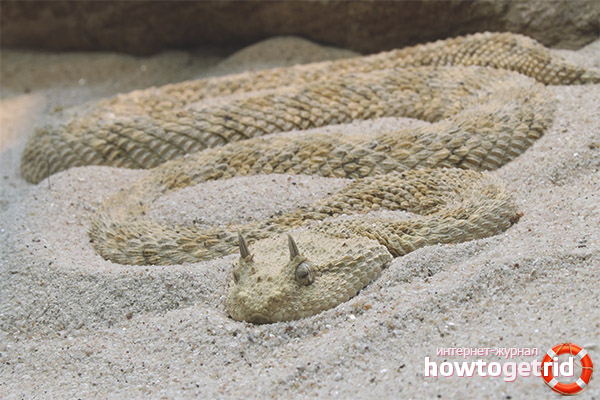
These reptiles move slowly and quietly. Asylum for the snake become mink rodents. She often hides in the cracks of the earth's surface, under large stones, sometimes creeps into not very large bushes. Often buried in the sand, only her eyes are visible on the surface.However, to see a horned viper in such a secluded place is almost impossible because of its sand color, which plays the role of camouflage.
Not colorful snake color helps her easily disguised in the area. However, if there is an uninvited guest near, the reptile rises up on the tail in the shape of the letter “S” and vigorously rubs its body parts. Scales from the side touch a friend for a friend, after which a specific hissing sound appears. This frightening sound of enemies, can stretch up to two minutes.
Venomous horned viper
This species of snake, as well as other members of its large family, scientists attribute to the venomous reptiles. In the mouth of a snake can be seen two sharp teeth, which it folds and hides in the mouth until the next hunt.
After the bite of this snake in the human body there are tangible reactions to the poison, the bitten one feels as if his heart is strongly compressed. In general, the person feels general pain, swelling, the body overcomes a small paralysis. At the same time, the bite of this snake is not fatal, therefore patients will hardly need serum or an antidote to the bite of a horned viper.
Video: horned viper (Cerastes cerastes)

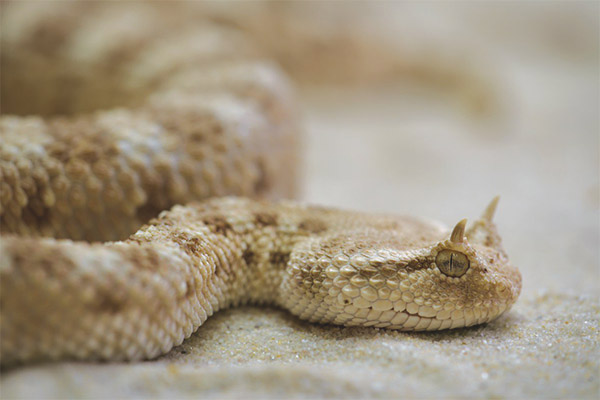

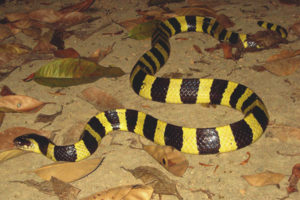

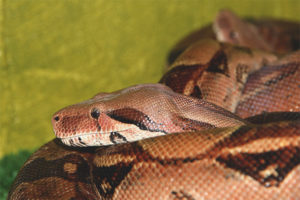
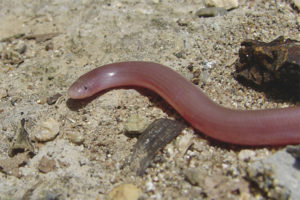

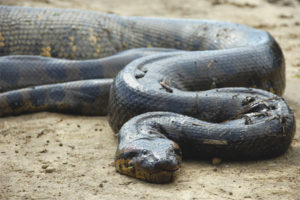

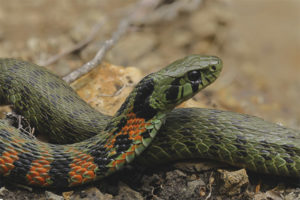
To send